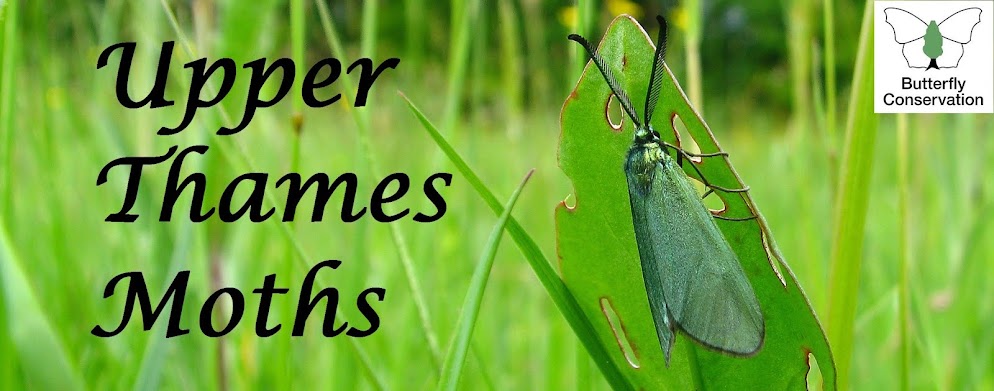Although it is perhaps a week or two early for many species yet, I took a 30-minute look around our own garden at Westcott, Bucks this afternoon to check on what might already be visible and with relative ease found active mines of Stigmella plagicolella (on blackthorn), Stigmella viscerella (on elm), Phyllonorycter leucographella (on pyracantha), Parornix anglicella (on hawthorn) and Parornix finitimella (on blackthorn), as well as numerous vacated mines from the summer generations of other species. If there's a need to study the mines closely I take back-lit photographs like the first two below and then view them on the computer screen.
 |
| Mines of Stigmella plagicolella, Westcott 5th September |
 |
| Mines of Stigmella viscerella, Westcott 5th September |
 |
| Mine and larva of Parornix finitmella, Westcott 5th September |
Nine mines of Stigmella plagicolella on a single blackthorn leaf is probably a record sighting for me and suggests one very lazy female moth! The Parornix blotch mine needed to be opened to get a close view of the larva in order to differentiate it from its close relative Deltaornix torquillella which uses the same food-plant and which I also get in the garden.
Dave Wilton

Don't forget that not all mines are made by moths. Flies, beetles and hymenoptera are also common leaf-miners. If your key doesn't cover these you might find instances were nothing fit.
ReplyDelete...and if you download the key this is made abundantly clear in its introduction. However, most of the mines of other orders are quite different in structure from Lepidoptera mines and are reasonably easy to recognise. Helpfully, many are also illustrated on the websites mentioned.
Deletethanks for the timely reminder.
ReplyDelete